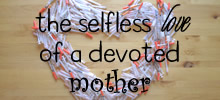I finally managed to catch the PBS show Objects and Memory when it was showing rather than after it was over. It looks at how we hold on to objects to remind us of events, people, places, and how we might create objects in memory of things that have happened.
These objects most often have absolutely no monetary value, yet they are the things we value the most in our lives. If your house were burning down (as happened in California to a staff member at NPR with the wildfires there recently), more than the TV or other expensive things in your house, these are the things you would grab and save.
Using this broad idea, they looked at objects that were collected from the towers in New York after September 11, 2001, and also at the objects that were left there by survivors after. They mentioned similar phenomenon happening in Oklahoma City and at the Vietnam memorial.
It was the simple objects people clung to after that, to remind them of the loved ones they lost. One woman lost her husband that day, which happened to be her birthday. Several months later they found his car and opened up the trunk while she was there. Inside the trunk of his car was a wrapped present for her with a card and some flowers. It brought tears to the eyes of everyone there. A reporter grabbed some papers that were flying in the air. On one of the papers was the signature of a man who was lost. The reporter sent the paper to the man’s wife. She still has that paper. It was the small things that people held on to.
And it was the simple things that people left – flowers, dolls, pictures, hats, shirts, patches. All of it was collected. All of it was part of the event.
 In Portuguese, souvenirs and such are called “lembranças,” or, translated, “memories.” Within that word is embodied the idea that objects provide a physical way to hold on to the memories. You can give someone a token of you, or a lembrança, so that they will look at that small token and remember you and your relationship.
In Portuguese, souvenirs and such are called “lembranças,” or, translated, “memories.” Within that word is embodied the idea that objects provide a physical way to hold on to the memories. You can give someone a token of you, or a lembrança, so that they will look at that small token and remember you and your relationship.
There are different objects I have that I keep for the simple fact that they are tied to a memory. And it seems like there is a part of me that feels that if I lose the object, I would lose the memory. And there are times when I will purposefully get rid of some objects because I am ready to be through with that memory, I don’t want to be carrying that metaphysical baggage any more and so I relieve myself of the physical objects. But there are other memories that I do not want to lose, that I cling to and keep them very much a part of me, and the objects with those memories are very near and dear to me. These objects remind me of where I’ve been and who I’ve known, and thus who I am.
It’s why I would never make quilts for money either. Those quilts are physical representations of how I feel about the person I give them to. The quilt is a physical piece of my love, a memory of how I feel. A quilt is part of me that is out there in the world without me, and I want to make sure the people who get that part of me know what to do with it.
From the scraps of the quilt I made for Goobi, I made some yo-yo pins. I had them made before he was born. The day he was born I pinned one to my backpack and one to my scripture case. They are small, simple objects. They look pretty cute too. But for me, they are objects of the memory and event of him being born and me becoming an aunt.
Of course holding on to the physical memories like that makes moving a bit hard. Perhaps I might be ready to clean some of my memories again.

 I am an educator and PhD. I quilt, belly dance, run, read, and try to grow things. I am a Mormon. I am infertile. I am a daughter, sister, aunt, grand-daughter, friend, wife, and mom.
I am an educator and PhD. I quilt, belly dance, run, read, and try to grow things. I am a Mormon. I am infertile. I am a daughter, sister, aunt, grand-daughter, friend, wife, and mom.














This was an interesting story about how we personalize our work environments as well, with objects that represent us and who we are (BBC – What Would You Take From Your Desk?).
What kinds of things are on your desk that personalize it for you?
This is a similar idea to what I wrote about last November about looking at where you live and what it says about you and who you are.